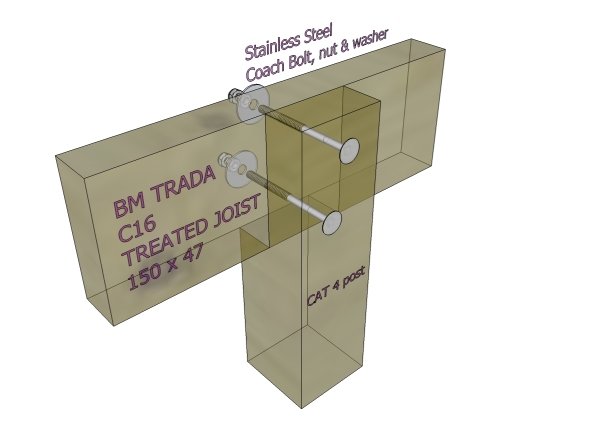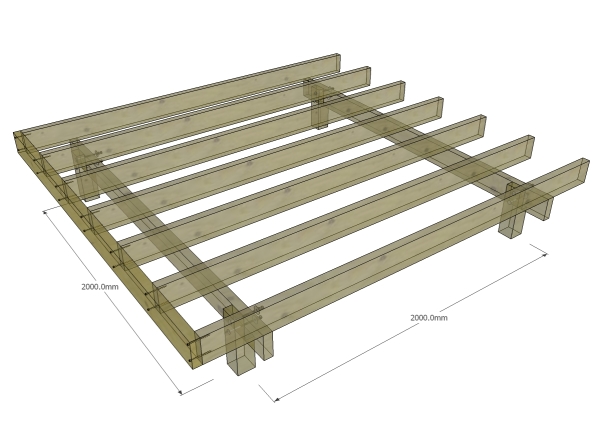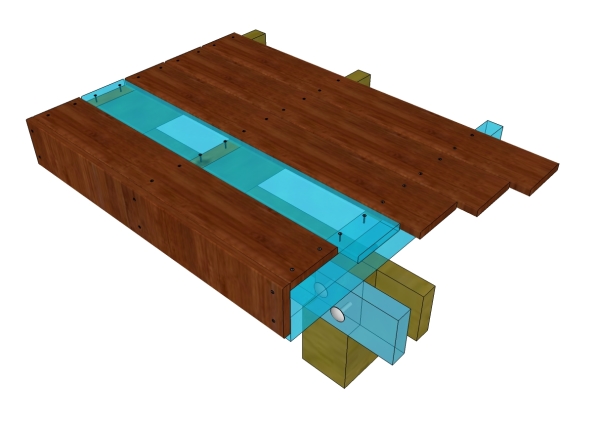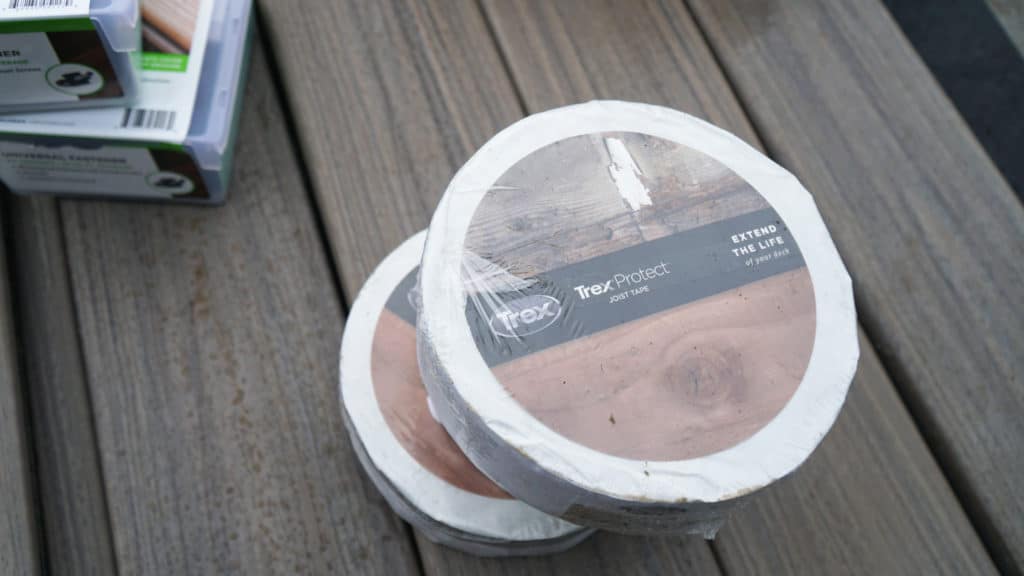Which Decking Substructure do I use?
All decking substructures are designed differently and there are many options for structural layout spans, post arrangements, timber connections and fixings.
There are many options for decking structures, Timber, HDPE (High-Density Polyurethane Plastic) and Aluminium.
Timber decking substructure designed to last is always with Treated and Graded structural timber joists and beams.
Your timber joists should be treated for Use class III or IV depending on where the decking is situated. Use Class III (BS EN 355-1) should not be in contact with the ground and should only be used above ground to uphold the expected service life. Furthermore, this is normally between 15 and 20 years depending on where you purchase from.
If it’s in the floor “Use Class IV” (BS EN 355-1), this is specifically treated for in-ground use but can be used anywhere.
Be sure to treat all holes drilled for fixings and all cut and exposed edges.
Post and Beam Construction
Post, Beam, Joist and Decking
Which decking support posts should I use
Often called posts or support columns they are essential for a correctly structured decking platform. You may use timber (UC4), PlasPro (recycled plastic), concrete or steel as support posts.
Timber support posts and columns
In the main where timber posts are used, a Use Class IV sawn post at 100mm a 100mm is the most used option. If a double joist is required then a 150mm x 150mm post should be used. The connection between the beams and joist should be onto a rebated or notched post/column. Also, the size of the notch or rebate should be the same size as the beam being used.
Timber joists should not under any circumstances be used as a post or column for a decking platform.
Plastic and HDPE support posts for decking
These are perfectly acceptable post options but only for decking platforms under 600mm off the ground. In hot climates, they become flexible and may not support the platform intended use and fall short of the correct kN loading in accordance with EC5 guidelines for decking construction.
If using HDPE, it is essential that stainless steel through bolts, plate and shake-proof washers and nylock nuts are used. Always in pairs and of sheer strength to observe the structural loading of 1.5kN/Sq./M for domestic and 4kN/Sq./M for commercial.
Steel support posts for decking
Probably the best choice for most decking platforms above the ground. Either an RSJ (Rolled Steel Joist in an I beam section) or PFC (Parallel Flange Channel in a C shape beam) set into the concrete will provide much more than a lifetime of worry-free decking post support. 8mm steel in galvanised is best to ensure also protection again corrosion.
When connecting your timber joists it is best done with 2 x 3mm square plate washers and fix with M12 nuts and bolts in stainless. The washers create a gap for water to run off and air to circulate. This will add years to your structure before rotting.
Decking Post Ground Anchors or Post shoe
These should be in galvanised or stainless steel and bolt fix to a concrete platform.
The cheap DIY should be avoided as the connection between the base plate and the bottom of your post is usually small and doesn’t provide a sturdy connection. There are commercial manufacturers of these base plates which are fit for purpose. Further, some offer a flitch plate in the vertical which provide the best fixing and sturdy support.
Adjustable Decking Pedestals in plastic for Decking Substructure
There are more than a dozen manufacturers of these adjustable plastic pedestals. They are intended for rooftop installations and usually account for slope correction and best of all they are adjustable. An efficient time saver when decking over a low-level decking as they negate the need for beams, the joist frame simply sits on them and they adjust to obtain a platform either level or to a fall.
They all have to be placed over a solid substrate, like a roof or a solid platform terrace.
The consideration when using pedestals isn’t s much the span of the joists, it’s the point loading on the terrace or roof, hence they are normally spaced at 500mm along the joist length and amount to approx 7 per sq. m assuming 400 joist centre.
Joist and Beam Tape
What’s the point in paying for a premium decking product that’s warrantied for 25 + years if the substructure won’t last 10 years? Exactly, keep reading…
If you consider your decking project an investment and more what will you get in return over the years? Using a respectable warrantied deck fitted by an approved installer often comes accompanied by a warranty for the decking. The substructure? Not covered.
It is standard practice to use Class IV treated pine for decking substructures. This treatment helps the longevity of the treated pine and will last approximately 15 – 20 years as a decking substructure before rotting. Is there a way to prevent the decking substructure from rotting? Yes, limit the amount of water getting in contact with it by using Decking Joist & Beam tape. Joist tape is self-adhesive and simply sticks to the tops of all the joists and beams prior to the decking going on top. This helps prevent water from touching the timber. Water is the cause of rot and is sometimes hard to avoid with poor air circulation under the decking surface.
If you’re an approved TrexPro then you will know all about Trex Protect decking joist tape. This tape has been designed specifically to help prevent rot and seal around screws; It’s also simple and quick to use. When Trex say they warranty their decking for 25 years they mean it.






